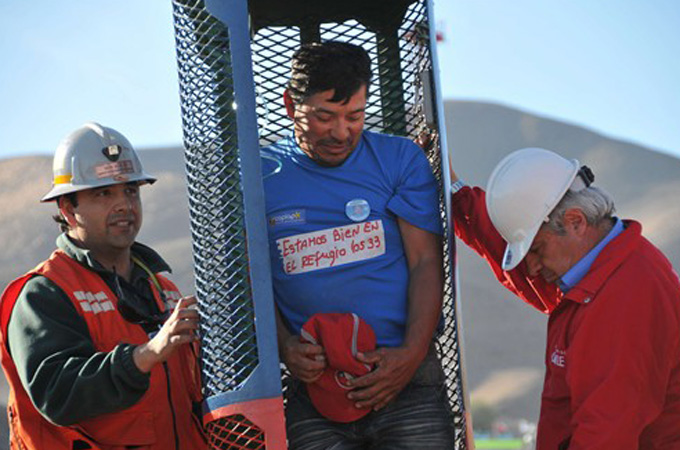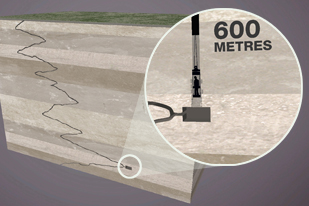Chile rescue ‘likely’ on Wednesday
Minister says evacuation of trapped miners set to begin after drilling for escape shaft is completed.

 |
| Once the shaft is deemed secure, miners will be brought to the surface in a steel capsule [AFP] |
Thirty three miners trapped underground for more than two months could see the light of day as early as Wednesday, Chile’s mining minister has said.
Rescue workers will likely start to evacuated the men once some 96 metres of an escape shaft is reinforced, Laurence Golborne said late on Saturday.
Engineers drilling the shaft at the collapsed mine in northern Chile, near the town of Copiapo, reached the trapped miners on Saturday morning, setting off jubilation at the surrounding campsite, where workers and relatives have been residing.
“We heard sirens from the location of the drill [and] that means the shaft has made contact,” Al Jazeera’s Monica Villamizar said, reporting from Copiapo.
 |
| Experts have decided to reinforce part of the 600 metre long escape shaft with steel piping |
“There is a lot of joy here. We are hearing cheers from the relatives, as this is the end of the first phase of the rescue operation and good news for the people camped out here,” our correspondent said.
Chile authorities had initially said evacuation work could begin on Tuesday, but after inspecting the tunnel, rescue teams decided to reinforce part of the escape shaft with steel pipe, delaying the extraction by a day.
A senior engineer said the planned operation could be risky, with miners having to set off explosives to widen the bottom of the mine so the rescue capsule would fit.
“It’s an explosion and that means taking precautions. We have to clear the area so that the shock wave doesn’t reach anyone,” Andre Sougarret, the engineer in charge, said.
The men have been trapped for 65 days, a world record for surviving underground after a mining accident, since the mine where they were working caved in.
Medical preparations
Preparing for the rescue, doctors have ordered the miners to do 20 minutes of aerobic exercise a day to prevent muscle cramps on the way to the surface.
|
|
They will also have to fast for eight hours before they come up, and they have been given sunglasses to protect their eyes after so much time in the dark.
Engineers say each capsule trip to the surface could take up to 1.5 hours, meaning the entire rescue could last up to two days.
“God be willing, in a few days the whole country will be weeping with joy … when we see these miners emerge from the depths of the mountain to embrace their wives, children, mothers and fathers,” Sebastian Pinera, the Chilean president, said.
Pinera said Evo Morales, the Bolivian president, would join him for the rescue. One of the trapped miners is Bolivian.
Engineers had initially predicted the first rescues would not be until Christmas.
Initially the miners were all thought to have perished. Then after two weeks of silence came an extraordinary note, penned in capitals and written with red ink, that gave Chile the miraculous news that the miners were still alive.
“All 33 of us are well inside the shelter,” the note said.
It was written by the eldest miner, 63-year-old Mario Gomez, and attached to a drill bit which breached their shelter on August 22.
Cameras lowered through small bore holes have revealed pictures of the men, often bare-chested because of the stifling heat, and their shelter lit mainly by the lamps on their hard-hats.
They are in remarkably good health, though some have skin infections from being in damp, humid
conditions for so long.